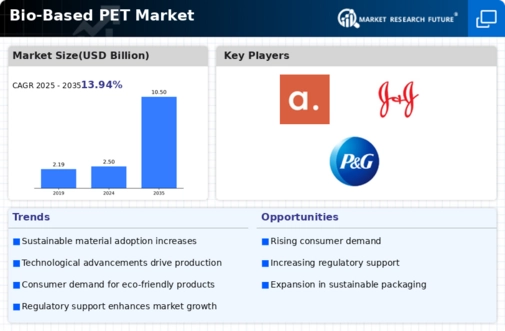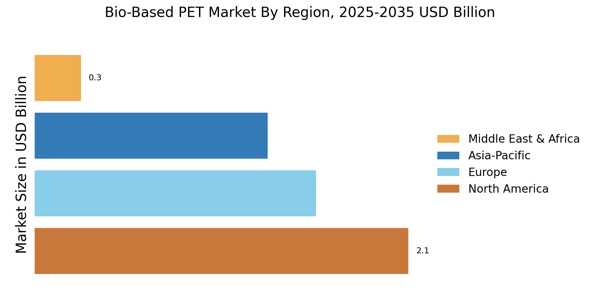Major market players are spending a lot of money on R&D to increase their product lines, which will help the Bio-Based PET Market grow even more. Market participants are also taking a range of strategic initiatives to grow their worldwide footprint, with key market developments such as new product launches, contractual agreements, mergers and acquisitions, increased investments, and collaboration with other organizations. Competitors in the Bio-Based PET industry must offer cost-effective items to expand and survive in an increasingly competitive and rising market environment.
The major market players are investing a lot of money in R&D to expand their product lines, which will spur further market growth for Bio-Based PET Market. With significant market development like new product releases, contractual agreements, mergers and acquisitions, increased investments, and collaboration with other organizations, market participants are also undertaking various strategic activities to expand their presence. To grow and thrive in a market climate that is becoming more competitive and growing, competitors in the Bio-Based PET industry must offer affordable products.
Manufacturing locally to cut operating costs is one of the main business tactics manufacturers use in the Bio-Based PET industry to benefit customers and expand the market sector. Major Bio-Based PET Market players, including Braskem, Gevo, Inc., TEIJIN LIMITED, Anellotech, Inc., TORAY INDUSTRIES, INC., Indorama Ventures Public Company Limited, M&G Chemicals, NatureWorks LLC, Novamont S.p.A, Plastipak Holdings, Inc., Amyris, Toyota Tsusho Corporation, and others, are attempting to increase market demand by funding R&D initiatives.
Braskem is a Brazilian petrochemical company and one of the largest producers of thermoplastic resins in the Americas. Braskem produces a wide range of petrochemical products, including polyethylene, polypropylene, PVC, and other specialty chemicals. Braskem serves a diverse range of industries, including automotive, construction, packaging, healthcare, and textiles.
Gevo Inc is a renewable chemicals and advanced biofuel company. Gevo's core technology involves the production of isobutanol, a versatile biofuel and chemical building block that can be used as a gasoline blendstock or as a precursor for other chemicals. The company has also developed technology for the production of sustainable aviation fuel, which can help reduce greenhouse gas emissions in the aviation industry. The company has also partnered with several other companies to develop renewable fuels and chemicals, including collaborations with the Department of Energy, Lufthansa, and others.
In addition to its renewable fuels and chemicals business, Gevo has also developed technology for the production of sustainable animal feed using its proprietary yeast strains.


















Leave a Comment